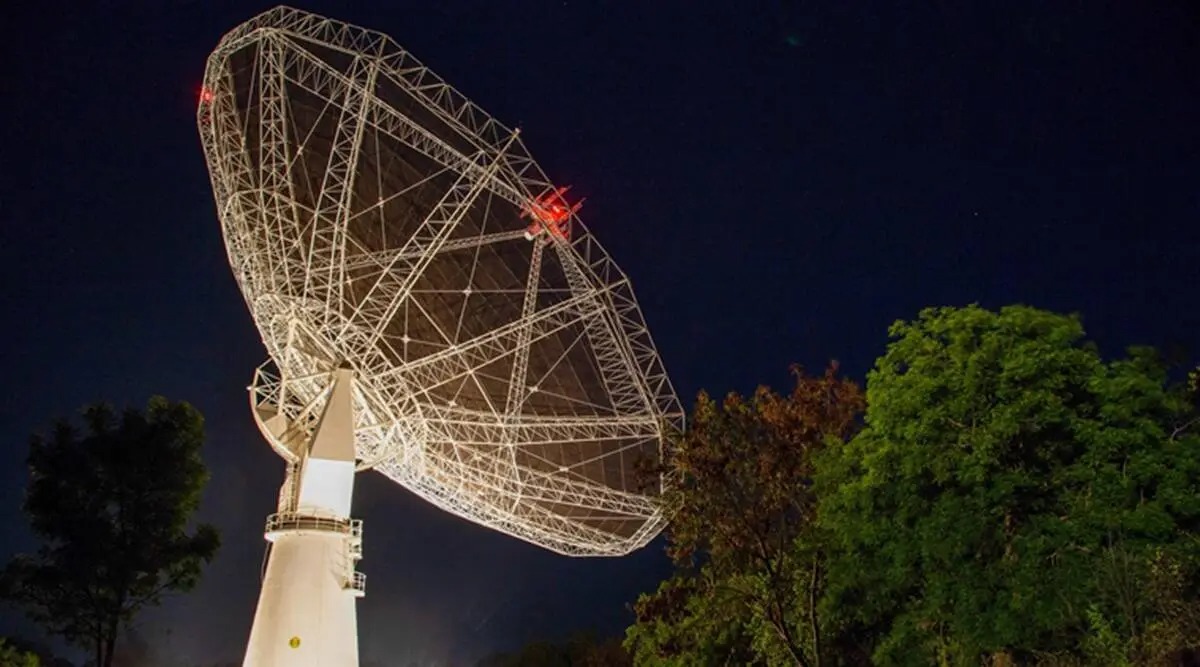 The maiden TRG 3C 75 was discovered in 1985 by the Americans using the Very Large Array located in New Mexico. (File)
The maiden TRG 3C 75 was discovered in 1985 by the Americans using the Very Large Array located in New Mexico. (File)A team led by Indian astronomers has discovered an extremely rare pair of intertwined radio galaxies, only the third such to be discovered ever.
Named as Twin Radio Galaxy (TRG), J104454+354055 has been discovered after 31 years since its predecessor was spotted in 1991 by a team of American and European astronomers. The maiden TRG 3C 75 was discovered in 1985 by the Americans using the Very Large Array located in New Mexico.
This view of dumb-bell-shaped galaxies was facilitated by observations provided by Pune-based upgraded Giant Metrewave Radio Telescope (uGMRT), operated by TIFR — National Centre for Radio Astrophysics (NCRA).
These observations were described in a paper authored jointly by Professor Gopal Krishna of NCRA, Prof Ravi Joshi from the Indian Institute of Astrophysics, Bengaluru, Dusmanta Patra from the SN Bose National Centre for Basic Sciences, Kolkata, and A Omkar of Aryabhatta Research Institute for Observational Sciences, Nainital, along with collaborators from the US and China.
Subscriber Only Stories
Only a few galaxies in our universe occur in pairs of tiny groups and are held together by gravity. All large galaxies, astronomers believe, possess a black hole in their centre. When it enters an active state, it ejects magnetised plasma jets in two opposite directions. This activity, however, ceases after tens of millions of years. With the help of radio telescopes like the GMRT, scientists have, in the past, detected these jets as they emit radio signals.
The twin elliptical galaxies were found orbiting around their gravitational centre along with their respective pairs of relativistic jets, seen extending upto 1.5 light years.
The scientists who were part of this team said that they will continue to further study the newest TRG.